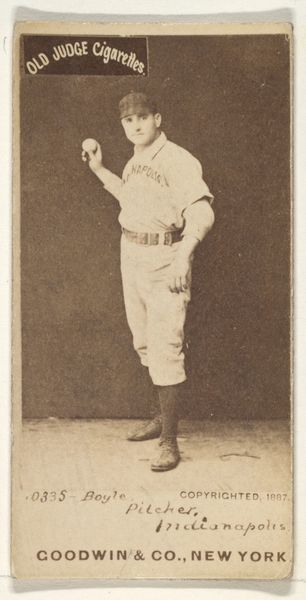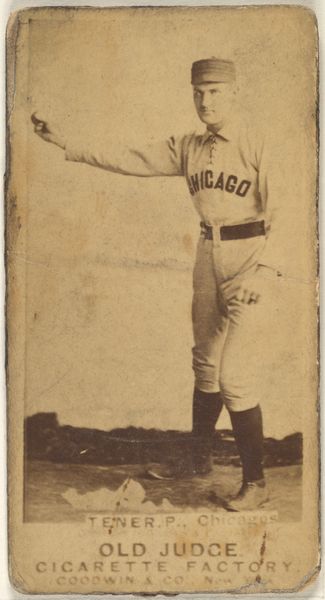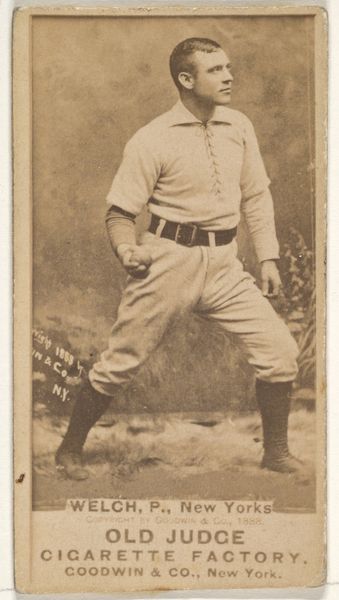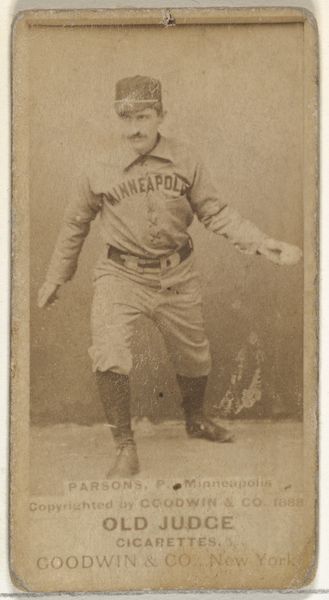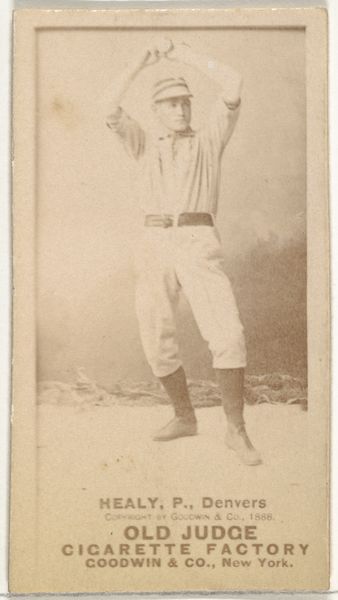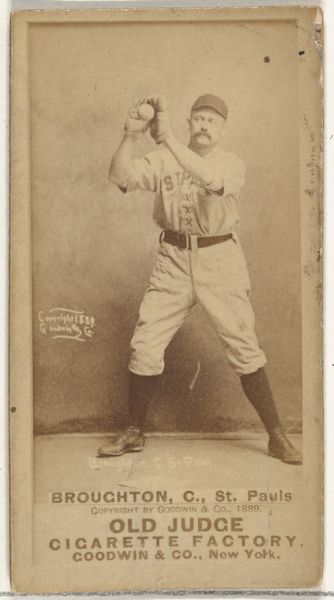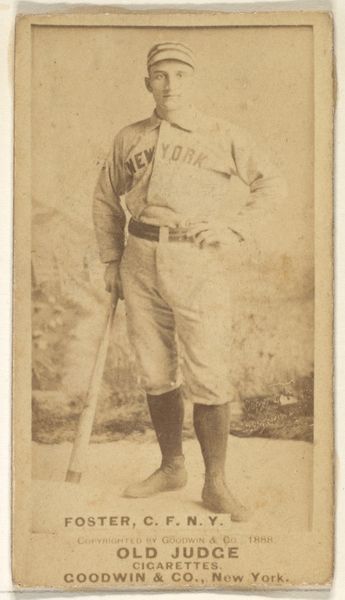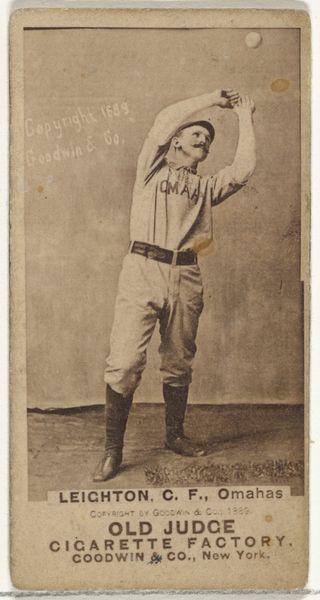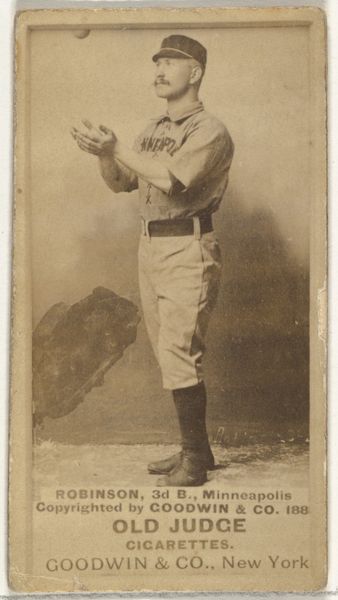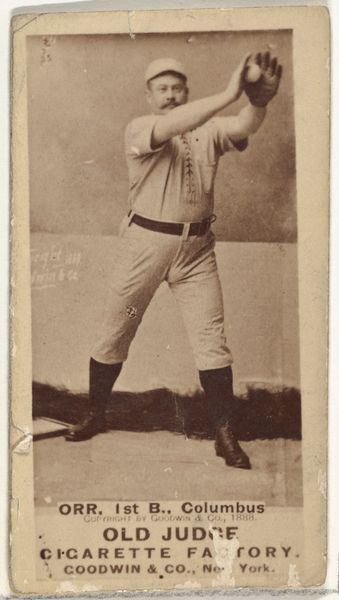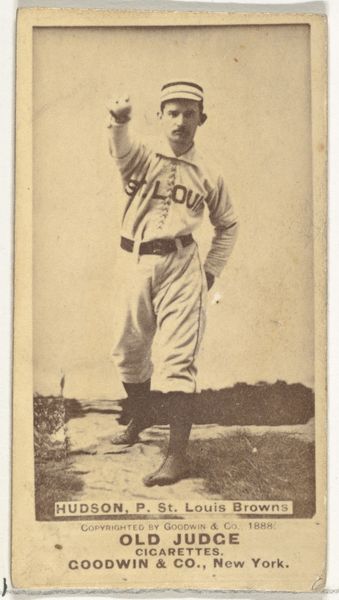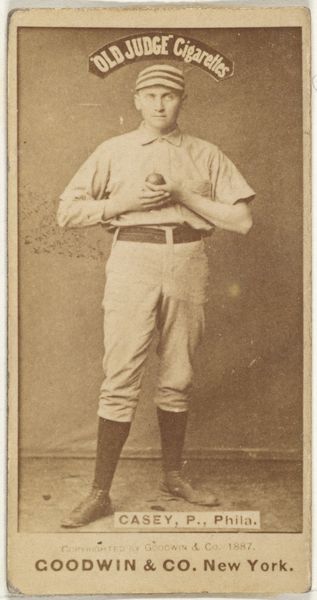
William Frederick "Bill" Krieg, Catcher, Minneapolis, from the Old Judge series (N172) for Old Judge Cigarettes 1888
0:00
0:00
print, photography
#
portrait
#
pictorialism
# print
#
baseball
#
photography
#
genre-painting
#
athlete
Dimensions: sheet: 2 11/16 x 1 3/8 in. (6.9 x 3.5 cm)
Copyright: Public Domain
Curator: The sepia tones create a real sense of nostalgia in this piece. It's an 1888 photographic print by Goodwin & Company, from the "Old Judge" series. The work is entitled "William Frederick 'Bill' Krieg, Catcher, Minneapolis". Editor: It's remarkable how such a simple portrait conveys so much energy! The texture in the photograph adds so much depth. It also suggests a specific, palpable historical era. Curator: Indeed! These cards were originally produced as promotional items for Old Judge Cigarettes. Think about the manufacturing process – the printing, the card stock, the labor involved in distributing these with tobacco products. That accessibility democratized art, in a way. Editor: I'm intrigued by how the figure fills the frame. It is a formal technique, focusing our gaze entirely on Krieg and his stance; the focus emphasizes his readiness and physical prowess. There’s a careful composition at play that elevates it beyond mere documentation. Curator: Exactly. And that blurriness around the figure, the slightly out-of-focus background...it speaks volumes about early photographic techniques, but also the rapid industrial expansion defining America at the time. Mass culture in the making! These baseball players became icons of mass culture thanks to production processes like these. Editor: And consider Krieg himself, his uniform and posture... Semiotically, he represents a kind of idealized American masculinity that was rising to prominence, as we built new codes about sport, labor and national identity. Curator: It is a compelling argument. This card circulated thanks to tobacco consumption and, conversely, promoted idealized visions of success. Think about the distribution chains and consumer habits woven into the artmaking. Editor: Thinking about all this certainly changes my initial reading. It is a great example of how the aesthetics of the art are enhanced by their material history! Curator: Indeed, I came in looking for details related to manufacture and social conditions and the card opened up whole new interpretative fields to consider.
Comments
No comments
Be the first to comment and join the conversation on the ultimate creative platform.
